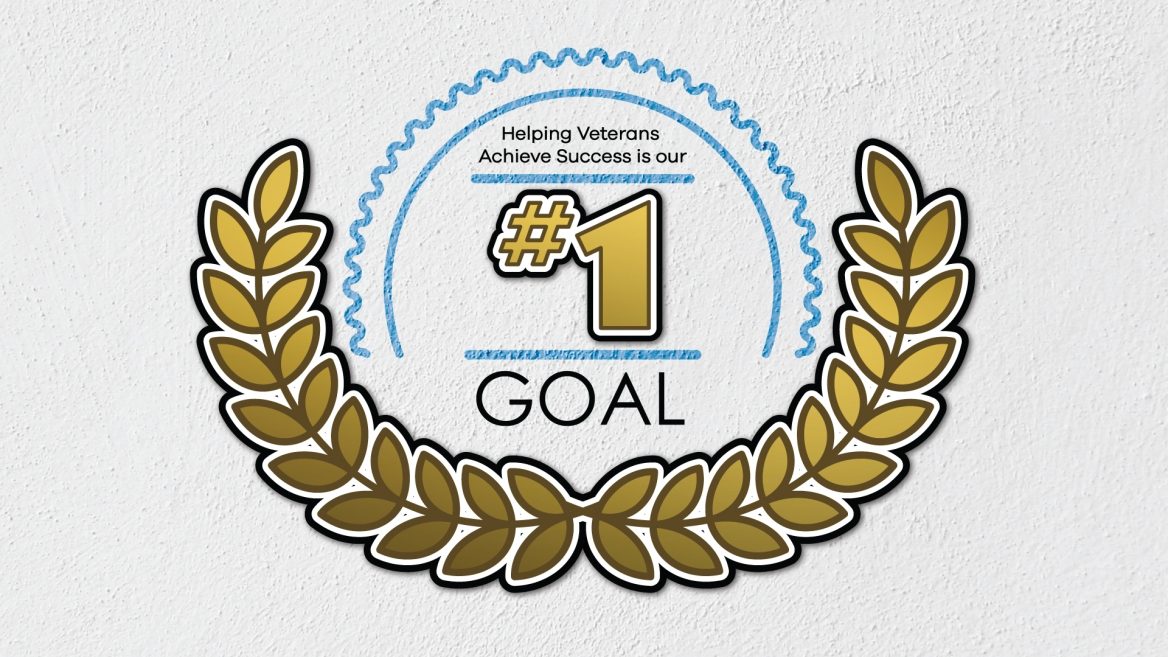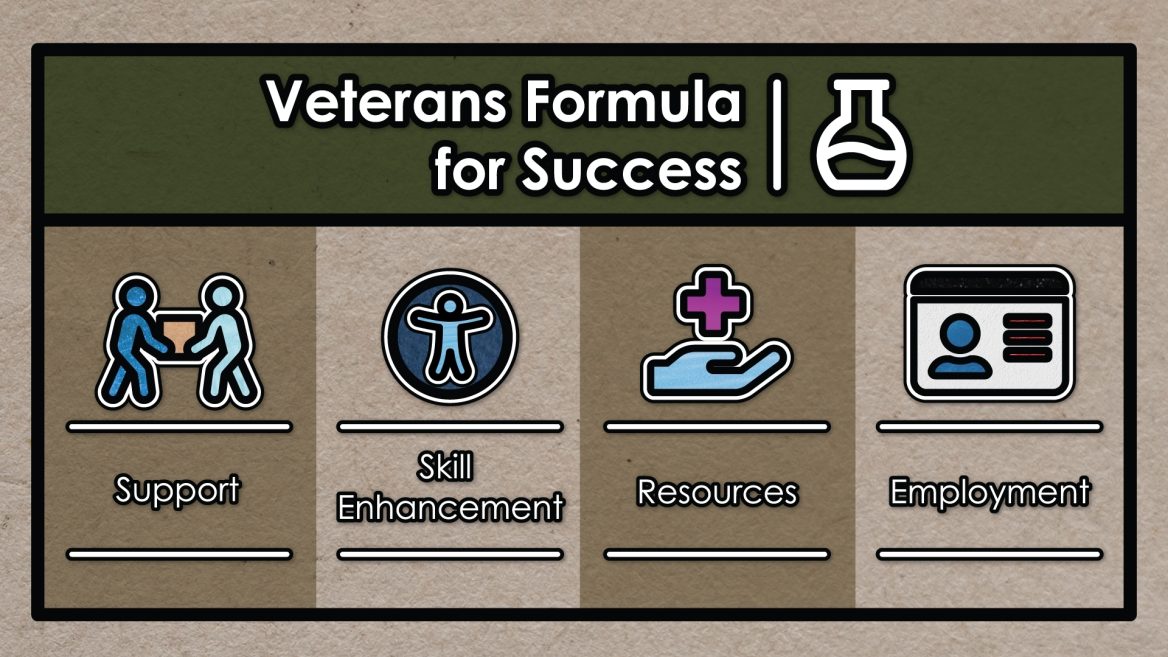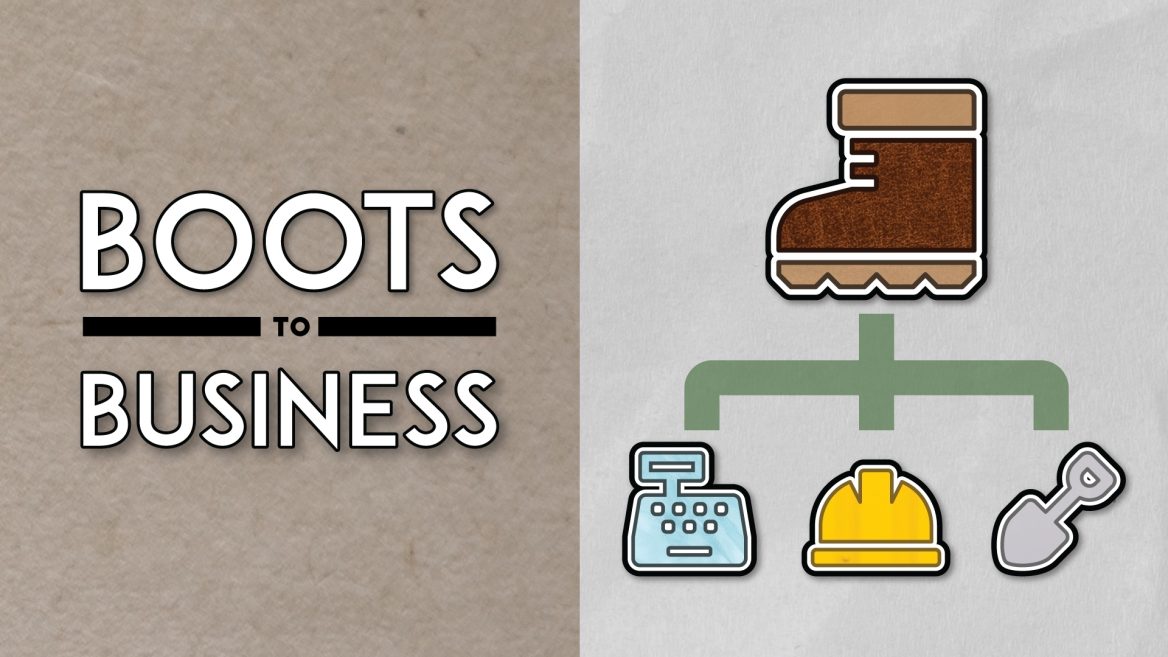Veterans Day Reflection: 6 Best Practices for Serving Job-seeking Veterans in Workforce Development
In celebration of Veterans Day, this blog is dedicated to all U.S. servicemen and women, as well as the workforce professionals who have the privilege of helping to guide Veterans’ career choices in civilian life. At EDSI, we are fortunate to employ dedicated Veterans Recruiters and Specialists who enjoy working with Veterans and understand their unique skills, leadership qualities, and valuable experience.
In this blog, I will discuss workforce development’s role in serving Veterans and share best practices to help workforce professionals and others serving Veterans tap into the most effective resources to guide them to sustainable employment. I consulted two Veterans, Peter Romano and Hector Rivera, who now have careers in workforce development helping fellow Veterans transition into the civilian workforce, and their insights will be shared throughout the blog.
What Is Workforce Development’s Role in Serving Veterans?
I asked Peter Romano, U.S.M.C., Corporal E-4, who is now a workforce development Veterans Specialist, about his passion for serving his fellow comrades:
“The question should be why isn't everyone passionate about serving Veterans? On the surface, being a Veteran is a simple definition, someone who has served in the military. I look at it as something so much more than that. People of all walks, religions, and color sign up to serve the country, the "whole country," protect people who do not agree with their way of life, religion, or political background, but there they are serving the country in a way that promotes self-sacrifice, people, and country first. We need more of this in today's environment.”
The Challenge of Civilian Employment
The return to civilian life brings many challenges. To help with those challenges and increase Veterans’ employment opportunities, federal and state governments rely in part on the workforce development system. Programs such as the Workforce Investment Opportunity Act (WIOA) and Wagner-Peyser provide skill enhancement, knowledge and training to enable them to gain and retain employment. Veterans services are offered within both of these programs and through special grants and service-priority programs.
First, let’s look at some Veteran unemployment statistics.
Veterans and Unemployment
The national unemployment rate for Veterans reached 8.6% in June 2020; by September it had dropped to 6.4%. While still high by pre-COVID standards, it is still lower than the national unemployment rate of 7.9%. Yet the long-term economic effects of the pandemic remain to be seen for all groups, including Vets.

Despite the low unemployment rates for Veterans, there is still room for improvement in the areas of recruitment, training, networking and outreach as outlined in the 6 best practices below.
6 Best Practices for Successfully Serving Job-Seeking Veterans
By utilizing existing government and private initiatives, workforce development professionals play an integral role in helping Veterans prepare for and launch their careers in the civilian world. Veterans are disciplined team players with advanced leadership skills, and they often perform well in high-pressure situations. It stands to reason that with the right support, they will be successful in securing employment. Let’s take a closer look at the best practices workforce professionals can use to make this happen.
Best Practice #1 – Develop a Targeted Recruitment Strategy
The first step in assisting Veterans in their employment journey is to develop a winning military recruiting strategy. This can include seeking out and attending job fairs hosted by the military or related organizations. Partnering with the military to co-host a job fair is another great option, as is helping clients look for open positions on military job boards, such as Military.com's Careers Channel.
A strong recruitment strategy should include outreach to all community partners, Veterans organizations, government entities, and local high schools and colleges, where you can reach Veterans through enrolled students. Be sure to check out the additional websites and resources at the end of the blog.
Best Practice #2 – Know How to Translate Military Experience into Civilian Skills
Good workforce professionals know how to translate military skills into civilian skills. Some Veterans may look at a job description and think their military experience isn’t a match, but this may not be true. They may just need a little help figuring out how their skills translate in the civilian world. Military.com offers a skills translator that sheds light on this issue.
A military skills translator can help identify civilian jobs that are similar to military training. The process starts with the Veteran and/or workforce professional researching civilian occupations to understand the language and skills relevant to the civilian career field. This site can also help identify civilian occupations requiring the same or similar skills as previous jobs held by the Veteran in the military.
To evaluate opportunities that transfer military skills to civilian jobs, it’s helpful to assist Veterans in setting up informational interviews with friends, colleagues, or acquaintances. Focus on the fields/occupations that they are interested in and see if the people they talk to will offer insight into the nature of their job responsibilities. The focus for these interviews should be on learning what it takes to succeed at that type of job. Most people -- especially those with former military experience -- will help by offering a wealth of information. In other words, use existing and new networks. More on that below.
Best Practice #3 – Networking, Referrals and Employer Outreach
As a workforce professional, there’s no question that you have a wealth of resources and connections that will benefit your Veteran client. Be sure to leverage existing team members and networks within your own professional or social circles. Inquire within your regional offices to find out if anyone is former military and ask if they can refer any unit buddies or other Vets to share knowledge and network with. Military.com's Veterans Career Network is a great resource as well.
It is also important to mention that Veterans may need pre-employment assistance such as treatment for PTSD, depression, or substance use disorders. If Veterans are in need of counseling for any of these, referrals to supportive services and agencies that can help them overcome their barriers and issues will get them on the right path to healthier living and sustainable employment. Here are a few helpful resources:
- National Veterans Foundation– Offers crisis management, information referrals and outreach for veterans in need. Call: 855-838-5444
- Give an Hour—This organization connects customers to a local mental health clinic for a free, in-person counseling session. Email: info@giveanhour.org
- Homecoming for Veterans—Extensive directory includes a list of clinicians across the U.S. who have agreed to see Veterans for 20-minute sessions at no cost. Call: 877-334-4334
For companies that hire Veterans, the consensus is clear: Veterans represent an excellent candidate pipeline. Research from the Center for a New American Security shows that hiring Veterans is good business, according to interviews with 87 individuals representing 69 companies. The companies reported 11 reasons they hire Veterans, with an emphasis on Veterans’ leadership and teamwork skills, character and discipline.
Feel free to cite the above research to encourage partner employers you work with to market their organization as a Veteran employer of choice. Veteran-friendly organizations should be encouraged to build their company's brand in the military community. Highlighting Veterans who work in their organization and talking about the fantastic job they do would reinforce the value of employing these high-caliber individuals.
Best Practice #4 – Mentors Provide Needed Support and Encouragement
Ask Veterans working in your company if they would be willing to serve as mentors. Mentors can offer firsthand perspectives to help job-seeking Veterans gain confidence and translate their military skills to the civilian workplace. EDSI does this in their New York programs. Hector Rivera, our Workforce1 Healthcare Veterans Recruitment Account Manager and U.S. Army, Sergeant First Class, has this to say:
Some of the great resources that I’ve found to be most helpful for Veterans come from our own backyard. Prior to working for Workforce1, I took advantage of the free workforce services provided in resourcing for work and/or fine tuning my interview skills.
Rivera reflected on the resources he used when making his transition back into the civilian workforce and said these are strategies he uses with his clients as well.
- Use GI Bill benefits for college: “I did this myself and it provided a wonderful opportunity for me to connect with other Veterans (some even professors) and tap into a wealth of knowledge and inspiration.”
- Seek out Veterans groups and organizations in your region: “I have used these same resources to achieve my goals and beyond. Joining together with fellow Veterans helps us all see what can be achieved to establish ourselves.”
- Research small business services: “A great resource if you’re considering the entrepreneur path. This is where I found resources to begin my journey as an entrepreneur.”
Best Practice #5 – Skill Enhancement Tools
We recommend offering assessments to Veterans to establish a skills baseline. The following tools will provide each Veteran with perspective and insight to inform their career search:
- Skilldex: EDSI’s online inventory assesses an individual’s skills and determines the education or training they need to gain employment. The inventory analyzes each past work experience into keywords and tasks, identifies performance levels of these tasks, and rates the person’s ability in each skill area. The resulting profile can be matched against specific job openings to see if the individual’s skills match those needed for the job.
- AcuMax Index (AI): This simple online tool ranks an individual’s work style on a continuum of four drives: ideas, communication, decision speed, and information. The result is a unique profile that provides insight into how he/she best functions in the workplace. For more information on AI, check out this blog.
- Veterans Skills Matcher: The Veterans Skill Matcher rates your levels on 40 key workplace skills and shows careers that match your ratings. Presented by the American Job Center network.
- O*Net Online: The O*NET database contains hundreds of standardized and occupation-specific descriptors on almost 1,000 occupations covering the entire U.S. economy. The database, which is available to the public at no cost, is continually updated from input by a broad range of workers in each occupation.
Best Practice #6 – Help Support Regional/Economic Alignment
LWDBs, the Department of Commerce, Office of Workforce Development, and community colleges are great examples of entities poised to help our Veterans achieve sustainable employment. It’s important to leverage long-standing relationships with these partners to ensure the alignment with existing local, regional, and state education, workforce, and economic development initiatives. Every area of the country is covered by these organizations. Local Workforce Development Boards may be specific to a city, a county, or a multi-county region, and each one is an expert on the people they serve and the high-priority occupations in their area. Community colleges are an invaluable resource in helping all individuals fill in their skills gaps, and many have staff devoted to helping Veterans gain the credentials they need to leverage their military experience into a rewarding career.
As you can see, there are numerous tools and ideas that can be used to advocate for Veterans in their quest for employment, including customized programming being offered by companies like EDSI, as described in the section below.
How EDSI Serves Veterans
In our northeast region, EDSI’s Staten Island Center places about 125 Veterans and spouses into full-time employment each year. Most are Veterans; spouses represent about 10% to 12% of the total. We serve this population and address barriers such as limited education, limited civilian work experience, disabilities, those formerly involved with the criminal justice system, addiction issues or need for other supportive services. This population tends to be highly motivated, sincere and work-ready after attending basic resume and interviewing classes. The gap between enrollment in the program and job placement is often just a couple of weeks.
In 2017, EDSI created a series of fast-track industry-specific training programs, a.k.a boot camps to offer jobseekers a quicker and more innovative way to transfer the skills they already possessed into family wage-sustaining careers in industries such as IT, manufacturing, healthcare, and customer service.
Each boot camp lasts about 4 weeks and can be delivered virtually or in person. These boot camps have proven to be successful with jobseekers in many of our programs across multiple states. Participants in our 2019 Delaware County EARN Customer Service Boot Camp achieved an 83% employment rate. This high success rate proves the effectiveness of the training and its ability to create opportunities for underserved populations.
A customized boot camp for Veterans would also be extremely relevant because curriculum could easily be tailored to highlight the unique areas of emphasis Veterans need. One of the crucial elements in these boot camps would include a five-day mindfulness curriculum designed to help individuals detach from repeated negative patterns of thought and behavior and influence present moment experiences. Attention, awareness, and fluidity are all foundational concepts that can help all participants thrive in both the workplace and in the community.
How to Best Serve Veterans
When I asked Hector Rivera what advice or recommendations he had for other workforce professionals around the country who are trying to serve Veterans, he offered 4 great tips:
- Actively listen. Veterans have a difficult transition as they return to the general populace. Many Veterans have endured more than anyone can imagine and often need to be reminded that they are human.
- Research
- Educate yourself on all 5 branches of service and their reserve components.
- Know how to identify a service member via their DD form 214, which is a document of the United States Department of Defense issued upon a military service member's retirement, separation, or discharge from active duty in the Armed Forces.
- Be familiar with MOS – the military occupational specialty code, a nine-character code used in the United States Army and United States Marine Corps to identify a specific job.
- Empathize. Show compassion toward Veterans and with military spouses (including those who are widowed) who have endured long-term separation from their loved ones.
- Remember. Your efforts are never in vain. Patience to serve those who have served can become overwhelming. It’s a service that speaks volumes to other Veterans when done properly.
Additional Veteran Resources that Offer Transition Support
Here are several targeted and helpful websites of organizations offering transition support that workforce professionals or Veterans themselves can utilize:
U.S. Department of Veterans Affairs Office (va.gov)
HelmetstoHardhats.org
Purple Heart Foundation
Employer Incentives for Hiring Veterans
debt.org/veterans/business-incentives-hiring
Work Opportunity Tax Credit (WOTC)
IRS tax credit for businesses hiring Veterans
Education and Training (Office of Veterans Affairs)
GI Bill benefits for education, housing, supplies and more
We would love to support your work in supporting Veterans or other in-need populations in your region. Reach out to speak with one of our team members today by filling out the form below.




